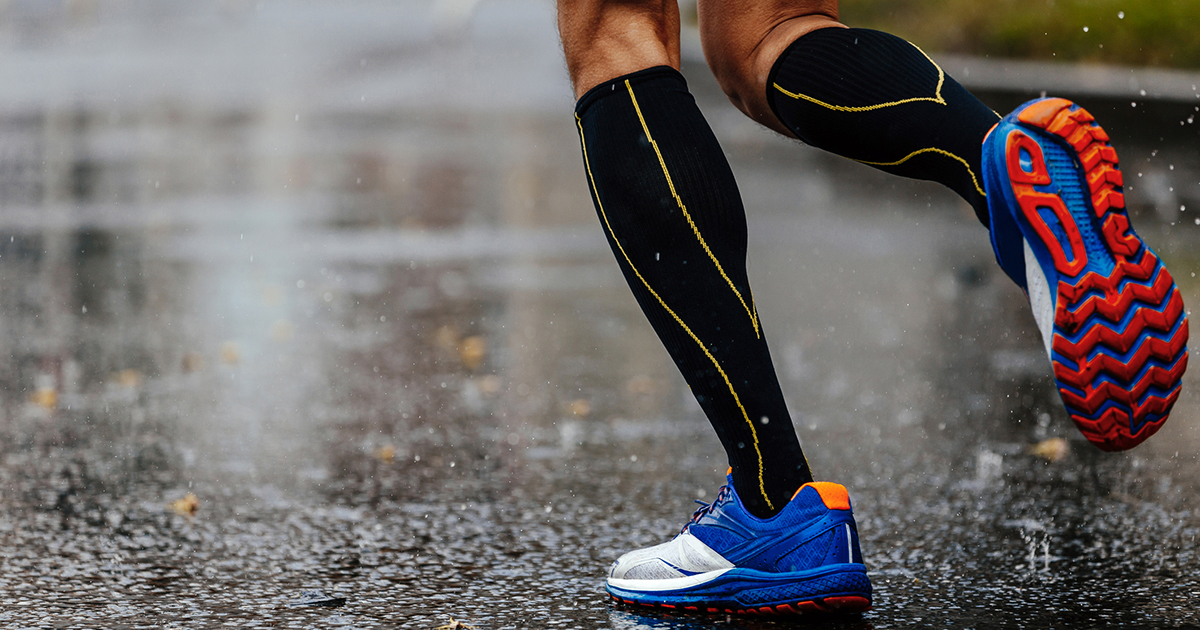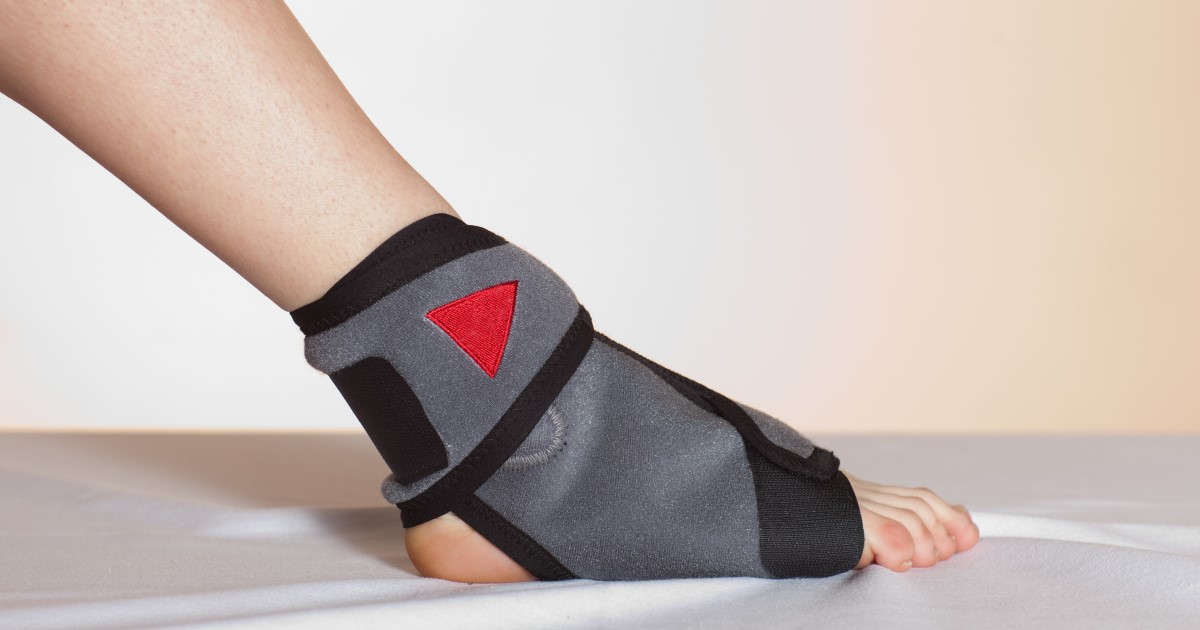How To Treat Plantar Fasciitis
Plantar fasciitis is a prevalent foot condition that causes pain in the heel. When the fascia, the tissue band connecting the heel to the toes, becomes irritated or inflamed, it causes pain in the heel. It typically occurs as a result of poor weight distribution in the foot or after excessive and repetitive use and is most common in individuals who regularly run long distances or spend a lot of time on their feet. Common risk factors also include tightness in the calf muscles, age, poor arch support, being overweight, and wearing footwear that lacks proper structure and support. Thankfully, however, there are several ways to treat and prevent plantar fasciitis.
Prevention With Compression

There are a variety of ways an individual can prevent plantar fasciitis from happening to them. For instance, when a person wakes up and experiences heel pain first thing in the morning or suffers from a significant amount of pain at night, they can find relief by resting and staying off their feet, icing the affected foot to reduce inflammation and pain, exercising the foot, wearing comfortable and supportive shoes and insoles, and wearing compression socks. Compression socks and compression sleeves, especially socks that specifically prevent and treat plantar fasciitis, can help ease the pain the patient is experiencing.
Designed for maximum comfort and crafted from the softest, highest quality materials, these compression socks are specifically engineered for those with plantar fasciitis to help soothe the foot and heel, and to provide maximum pain relief, as they provide the necessary support and compression to the plantar fascia tissues, heel and arch as well, preventing and treating excruciating pain from reoccurring. These socks also help to increase circulation, reduce swelling and inflammation, prevent irritation to the affected area on the foot, and fit comfortably and sleekly in any shoe. Prevent plantar fasciitis from happening to you and help treat it fast with a pair of these fantastic and sleek compression socks foot sleeves for rapid pain relief today.
The Importance Of Proper Support

As previously mentioned, to effectively prevent and treat plantar fasciitis, an individual will need to properly support their feet with the right pair of shoes, insoles, braces, and a night splint. For proper foot and heel support, it all starts with the right footwear. A pair of orthopedic shoes designed to specifically prevent and treat plantar fasciitis, provide maximum comfort and support to the foot and heel, as most shoes come with a premium orthotic insole that provides arch support, cushions the heel, conforms to the contours of the foot while walking, and enhances comfort and helps to relieve heel, foot and other lower body pain associated with plantar fasciitis.
A heel or arch support brace can also work wonders for an individual struggling with plantar fasciitis pain. Offering tremendous arch support and helping to absorb damage and shock the foot might encounter, a support brace will minimize the damage done to the foot as well as alleviate heel and arch pain due to the extra support the foot will receive. A foot brace or night splint is also another alternative way to help prevent and treat plantar fasciitis as it offers fantastic foot support and provides morning pain relief, as this brace is designed to keep the foot stretched and provide corrective orthopedic support for drop foot. Put an extra spring in your step and alleviate foot and heel pain with the proper support by ordering a pair of orthopedic shoes, a heel or arch support brace, or a foot brace or night splint, today.
Stretching And Massaging

One of the best ways to prevent and alleviate pain associated with plantar fasciitis is to stretch and massage the affected tendons, muscles, and joints of the foot. There are a couple of simple ways to do this. A foot stretcher is highly beneficial to buy as many models are ergonomically designed to provide a deep stretch to the lower leg muscles, and effectively stretch the calf muscles, Achilles tendon, and surrounding stabilizer muscles to relieve pain and improve one’s overall balance, flexibility, and prevent this condition as well as other foot injuries.
A foot massager is highly effective in helping to relieve foot and heel pain as it eases tensions and alleviates foot muscle pain associated with this condition, and are portable and convenient that can be used anywhere. Also incredibly convenient and portable, a ball roller massager also helps to instantly relieve foot and heel pain, as the grooves, spikes, or smoothness of the ball applies the right amount of pressure to the affected areas, reducing muscle aches, soreness, and tightness by loosening tough knots and increasing the foot’s mobility and flexibility. Alleviate foot and heel pain associated with plantar fasciitis quickly wherever you are by ordering a foot stretcher, foot massager, and ball roller massager right now!
Orthotics

Orthotics are devices you can place inside your shoes to enhance the structural support as well as provide heel cushioning. With just a small tweak to your footwear, you can greatly increase comfort, correct your gait, and manage pain at the same time. Orthotics come in many sizes and shapes and are made from a variety of materials, such as a gel or polyurethane foam. Once inserted into the shoe, the devices mold uniquely to the shape of your foot, supporting your foot and ankle, absorbing shock, preventing pain from high impact activities, and improving posture. You can purchase orthotics from your local pharmacy, sporting goods store, or at a specialty physical therapy shop.
Pain Relief Medication

Pain relief medication is one such way of treating the symptoms yourself. Depending on symptom severity, these can be light over-the-counter medications or prescription painkillers. Anti-inflammatory medications, such as naproxen sodium and ibuprofen, are also commonly utilized for quick and easy relief from pain and the underlying inflammation in the feet. It's important to note, though, these medications are not meant for prolonged use, as they have detrimental side effects, such as heartburn, digestive issues, and nausea. More severe side effects include hypertension, liver and kidney damage, as well as allergic reactions.
Physical Therapy

Exercises can be done on one's own or in a treatment center with a licensed physical therapist. A variety of easy-to-complete exercises work to loosen tight calf muscles, increase mobility and flexibility, and build strength in the foot. Stretching techniques can utilize objects and structures within your home, such as walls, stairs, and any other object the arch can be rolled over. Strength exercises, on the other hand, might involve picking objects up with the toes.
The combination of strengthening the muscles then stretching to lengthen them is a tried-and-true method for stabilizing the ankles and heels. It is often reported to be the most effective method for treating painful plantar fasciitis and allows patients to effectively manage pain and get back on their feet faster. Physical therapy may be used alone or in conjunction with other treatment methods.
Steroid Injection

Receiving a steroid injection is another option for treating plantar fasciitis and managing the accompanying pain and inflammation. Doctors may recommend steroid injections, specifically cortisone, when symptoms are more severe. The cortisone is injected directly into the plantar fascia tissue and, as it's a potent anti-inflammatory medication, it can come with some severe side effects. Receiving powerful anti-inflammatory injections regularly or getting multiple at a time can lead to the plantar fascia rupturing, which actually worsens pain. Additionally, excessive injections can shrink the amount of fat padding that covers and protects the heel bones.
Surgery

Undergoing surgery is stressful for the body and, as such, is typically the last resort as far as treatment goes. Typically, surgery is only recommended by a doctor if and when the patient has been attempting nonsurgical treatment methods for at least one year and has been unsuccessful. Surgical treatment may also be called upon if the plantar fasciitis progresses and the pain becomes persistent and severe.
Surgical options include several procedures. Gastrocnemius recession targets tightened calf muscles by surgically lengthening them, which is meant to decrease the stress put on the plantar fascia. A plantar fasciotomy is another common procedure, in which the ligament is partially cut to relieve tension on the tissues. While surgical methods can certainly be useful and produce good results, they can also cause further complications, such as nerve damage.
